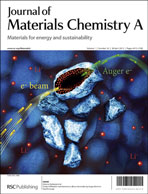A bio-based epoxy monomer (GA-II) was synthesized from renewable gallic acid. The aromatic group contained made it capable of being absorbed onto the surface of graphene via strong π–π interactions, which was proven by Raman spectra and UV spectra. The GA-II anchored graphene was easily homogeneously dispersed in the epoxy resin. After solidification, the graphene/epoxy composites demonstrated superior performances in terms of good mechanical properties, excellent thermal conductivity, as well as high electrical conductivity. With the addition of only 2 wt% GA-II/graphene, the tensile strength, tensile modulus, flexural strength and flexural modulus of the composites were improved by 27%, 47%, 9% and 21%, respectively. The thermal and electrical conductivities were also improved by 12-fold (from 0.15 to 1.8 W m−1 K−1) and 8 orders (from 7.0 × 10−15 to 3.28 × 10−5 s cm−1), respectively. This work provided us with an environmentally friendly agent with high efficiency for graphene dispersion and demonstrated an efficient method for fabricating epoxy/graphene composites with superior properties.

You have access to this article
 Please wait while we load your content...
Something went wrong. Try again?
Please wait while we load your content...
Something went wrong. Try again?


 Please wait while we load your content...
Please wait while we load your content...